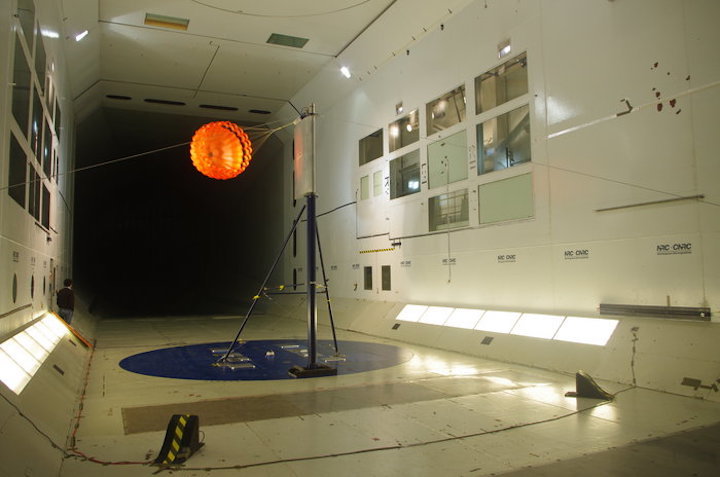18.01.2019

- Title Mars parachute testing
- Released 16/01/2019 8:27 am
- Copyright Vorticity Systems
- Description
Testing a candidate design for a subsonic parachute to slow a future mission to Mars inside Canada’s National Research Council wind tunnel, in Ottawa.
Mars has a thin but substantial atmosphere, which is both a hindrance and a help to mission designers. Protective heat shields must be flown to protect any spacecraft making atmospheric entry but parachutes are then able to slow down and stabilise their descent.
Up until now single parachutes have been employed for Mars missions, but in future a double parachute system offers a way to deliver a greater payload to the surface with enhanced trajectory control. A smaller, supersonic parachute for initial deceleration would be supplemented by a larger subsonic parachute for the descent phase.
UK company Vorticity Systems has performed testing on a range of subsonic parachute shapes for Mars missions with support from ESA’s Technology Development Element.
Testing made use of a drone, a helicopter and low- and high-altitude balloons as well as the 9 x 9 m Canadian wind tunnel pictured, plus a smaller 2 x 3 m wind tunnel at the same site – in combination with high-fidelity software simulations.
One test even seeded the air around a parachute with tiny droplets of olive oil, which were laser-scanned to better view their flow pattern.
“This was a very challenging project involving many tests at different facilities,” comments Luca Ferracina, overseeing the work for ESA.
“We collected an enormous amount of data to help us to better understand the behaviour and performance of many parachute types. This information will be key to designing future parachutes for Mars along with other planets such as Venus, Neptune and Uranus.”
Quelle: ESA
